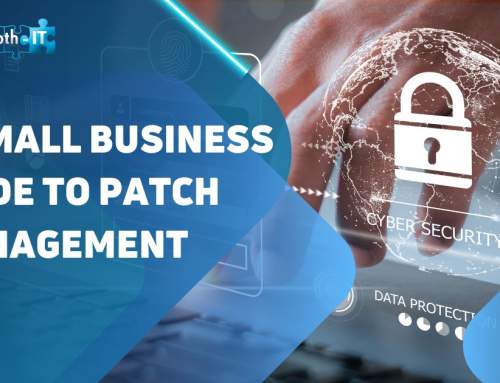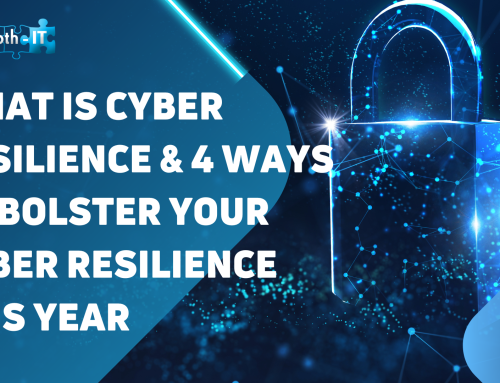Did you know that “The global average cost of a data breach in 2023 was USD 4.45 million, a 15% increase over three years,” according to this IBM report? I don’t share this as a scare tactic because it simply is the reality of the situation. Cybersecurity concerns continue to rise as threats and bad actors increase the frequency of their attacks.
Building an IT infrastructure for your business that increases cyber resilience is critical heading into the future.
So what is Cyber Resilience?
Cyber resilience is a holistic approach to protecting your business and clients, from identifying and preventing potential threats to implementing backup and recovery solutions. To be genuinely cyber resilient, you must weave cybersecurity into and throughout every level of your IT stack.
4 Ways to Instantly Increase Your Cyber Resiliency
Because cyber resilience is genuinely an all-encompassing approach, there is no one silver bullet solution. Ultimately, I recommend working with a managed service provider to build a strategy customized for your needs. However, in the meantime, here are five ways you can increase your cyber resilience.
1. Provide cybersecurity training to employees:
You might be surprised how many cyber-attacks find their way into companies due to human error. This remains the biggest exploit. Training your employees to spot potential hazards and report those threats to your IT team or MSP is a significant first step in defense against attacks.
2. Incorporate Multi-Factor Authentication (MFA):
Have you tried logging into your email on a new phone or computer? If you have, you’ve probably noticed your email client (Google, Outlook, etc.) requires you to confirm your identity with a passcode sent to your phone. That’s a great example of companies committing to leveraging multi-factor authentication. Requiring such authentication for your clients and employees gives you another layer of protection. Head over to our blog to learn more about the benefits of MFA.
3. Ensure Your Business Licensing is Up-to-date:
Whether you’re onboarding new talent or watching a member of your team take their next leap to a new role, it’s imperative that software licensing is updated immediately. Your goal is to ensure that the only people with access to your email systems or other crucial software are people who currently are officially part of the company. Companies must remember to update licensing when team changes occur.
4. Build a Crisis Response Strategy & Plan:
Preventing attacks is only one part of the puzzle. To be cyber resilient, you must have a cyber-attack response strategy. Think of “when” – not “if” – an incident occurs. What are the first steps you take after an attack?
Who needs to be involved in the decision-making process as you move forward, and what are the most important questions to ask?
5. Ensure you have backup and recovery tools in place:
If you are ever impacted by a cyber-attack, having a data backup and recovery ready to go will help save your company money, restore crucial data, and help you protect and better serve your clients. Side note here: backup is not business continuity or recovery. These three are separate practices.
What comes next?
You can only bolster your cyber resilience if you fully understand your current strengths and weaknesses. If you’re working with a managed service provider, I recommend having a series of meetings to discuss your current and future cyber resilience status and strategies. If you don’t currently collaborate with an MSP but would like to begin, I would be glad to have an initial conversation with you on the topic.




